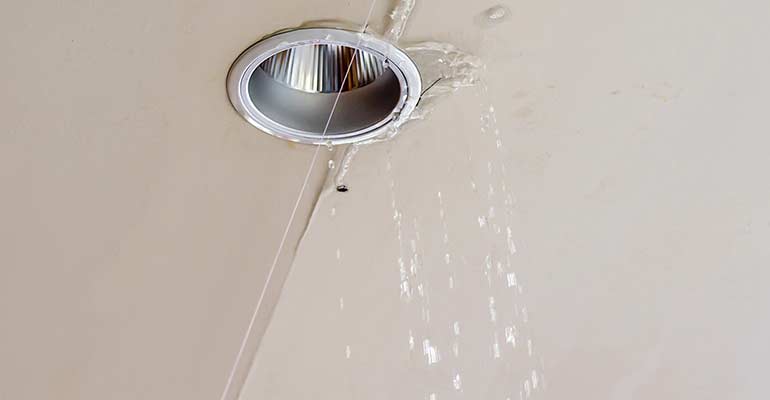Pick The Leak Detective Plumbing Co. for Specialist Leak Detection Solutions
Pick The Leak Detective Plumbing Co. for Specialist Leak Detection Solutions
Blog Article
The Duty of Advanced Modern Technology in Modern Leakage Detection Providers for Reliable Solutions
In the realm of modern-day leakage discovery services, progressed innovation has actually ushered in a new period of efficiency and accuracy. The integration of IoT, wise sensing units, and innovative strategies like acoustic detection and thermal imaging has actually changed how leaks are recognized and managed.
Development of Leakage Detection Innovation
The evolution of leakage discovery technology is a testament to technology and the ruthless search of precision. Historically, the discovery of leaks, whether in pipelines or industrial systems, relied heavily on primary and often inefficient methods.
Over the decades, advancements in innovation have changed leakage discovery into an advanced area. These sensors utilize a range of strategies, such as acoustic, infrared, and ultrasonic techniques, to identify leaks with impressive precision.

Trick Innovations in Leak Discovery
In current years, essential innovations in leak detection have changed the market, bringing unmatched precision and effectiveness to the forefront. Amongst these developments, the assimilation of IoT and clever sensing units is significant, enabling real-time tracking and data transmission. These devices are qualified of spotting minute adjustments in stress and circulation, permitting quick identification of leakages before they rise into substantial problems.
One more essential growth is the usage of acoustic leakage detection innovation - emergency leak detection. By using highly sensitive microphones and progressed formulas, this technique can find leakages based upon sound patterns. This technique is especially effective in identifying leaks in complex piping systems where visual examination is unwise
Thermal imaging innovation has also made considerable strides, offering a non-invasive approach to find leakages by catching temperature variants. This innovation is particularly valuable in spotting leakages in shielded or below ground pipes, supplying a clear aesthetic depiction of the issue.
Advantages of Modern Methods
Modern leak detection strategies offer countless benefits, considerably enhancing functional effectiveness and cost-effectiveness for organizations. One of the key benefits is the capability to quickly and precisely determine leaks, decreasing downtime and protecting against extensive damages. By utilizing sophisticated innovations such as acoustic sensors, infrared thermography, and advanced data analytics, businesses can identify leaks with precision, also in complicated or inaccessible systems.
These modern methods additionally minimize labor prices and source allowance. Typical leak discovery frequently needed considerable excavation and manual assessments, which were costly and lengthy. On the other hand, non-invasive techniques permit rapid evaluations, decreasing the need for disruptive and pricey interventions. This change not just preserves economic resources but additionally lessens functional disturbances.
By streamlining the detection process, firms can allot sources go to my site extra effectively, focusing on repairs and system improvements rather than extensive search efforts. Generally, contemporary leakage discovery techniques offer a calculated benefit, equipping companies to enhance their functional frameworks and accomplish long-term sustainability.
Environmental Impact Mitigation

The integration of these modern technologies into leakage detection solutions not just lines up with regulatory compliance yet also sustains company obligation campaigns aimed at minimizing environmental footprints. Therefore, progressed leakage detection innovation is essential in promoting an extra lasting and resistant future.
Future Trends in Leakage Detection
The future Discover More Here of leak discovery modern technology promises transformative improvements that will redefine market standards. As the need for effective and lasting framework grows, the integration of sophisticated technologies like expert system (AI) and the Net of Points (IoT) is set to transform the field. These innovations will certainly make it possible for real-time tracking and anticipating upkeep, lowering the likelihood of leaks and minimizing environmental impact.

Furthermore, making use of drones equipped with thermal imaging and progressed optics offers a non-invasive method for checking hard-to-reach locations. This technology not just enhances the precision of leak discovery but also guarantees the safety of employees by minimizing the demand for hand-operated assessments in unsafe atmospheres.
Furthermore, improvements in information analytics and cloud computing will promote the combination of leakage discovery systems into broader asset monitoring platforms, offering extensive oversight. These future fads highlight a shift in the direction of even more smart, automated, and sustainable leak detection options.
Conclusion
The assimilation of sophisticated technology in leak discovery services stands for a significant improvement in performance and accuracy. Real-time monitoring via IoT and smart sensors, combined with methods like acoustic discovery and thermal imaging, enhances system dependability and functional cost-effectiveness. Moreover, these technologies add to environmental management by minimizing unsafe launches and sustaining sustainable resource management. As technology proceeds to evolve, future fads will likely concentrate on further enhancing these capabilities, guaranteeing even more thorough and positive leak detection techniques.
In the world of modern leak discovery solutions, advanced modern technology has ushered in a brand-new era of effectiveness and precision.Leveraging sophisticated modern technology in leak discovery not just boosts operational effectiveness yet also plays an essential role in environmental impact mitigation. Early and exact detection of leaks, facilitated by cutting-edge technologies such as acoustic sensors, infrared imaging, and real-time surveillance systems, considerably lowers the quantity of dangerous compounds launched right into the environment. The combination of these innovations into leak discovery solutions not just aligns with regulatory compliance however additionally sustains corporate responsibility efforts aimed at decreasing ecological footprints.The combination of sophisticated modern technology in leakage detection services represents a substantial advancement in effectiveness and accuracy.
Report this page